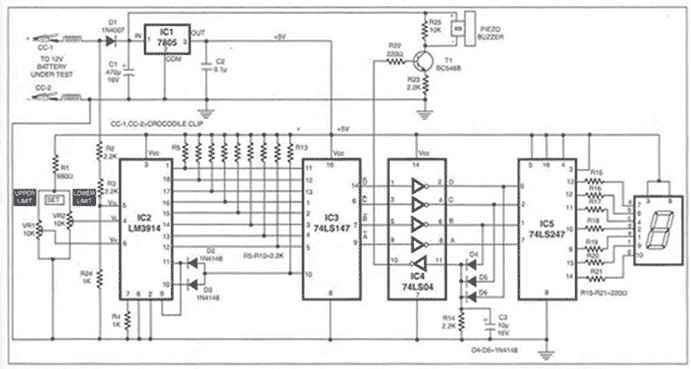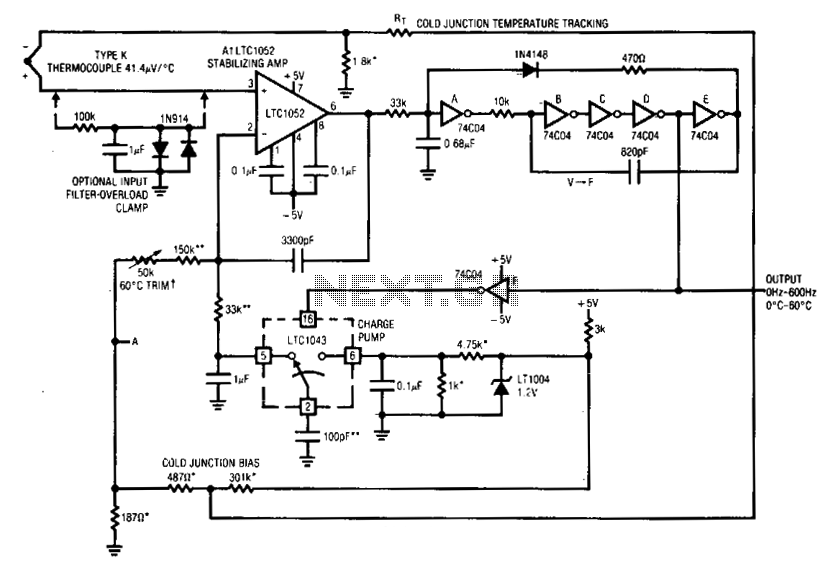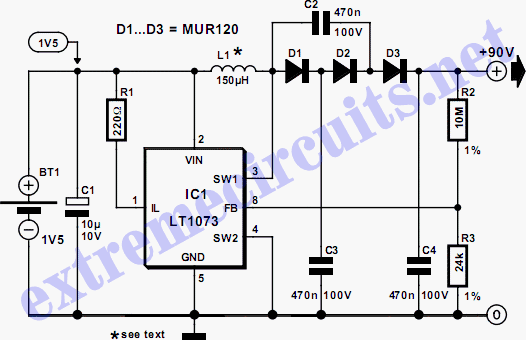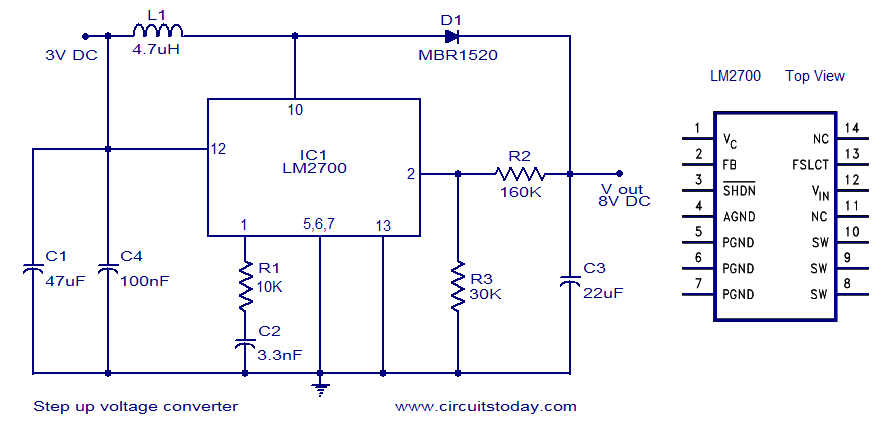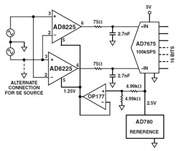
12v to 5v converter
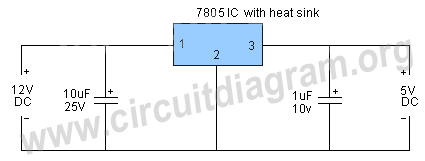
This circuit is a 12V to 5V converter utilizing a 7805 regulated IC. In a previous article, a circuit for a 12V to 9V converter using the 7809 IC was discussed. The circuit presented here is also a step-down DC to DC converter, but it employs the LM7805 IC, which can provide a fixed 5V output from any 12V DC source. This circuit is particularly suitable for use with a 12V car battery, stepping down the voltage to 5V DC. The LM7805 is part of the LM78xx series and features built-in protections such as thermal shutdown, short circuit protection, and safe operating area protection. These types of ICs are commonly used in regulated power supply circuits.
The 12V to 5V converter circuit using the LM7805 IC operates by taking an input voltage of 12V DC and regulating it down to a stable 5V DC output. The LM7805 is a linear voltage regulator that provides a simple and efficient means of achieving voltage regulation. It typically requires minimal external components for operation, which enhances its usability in various applications.
To construct the circuit, the LM7805 IC is connected with input and output capacitors to ensure stability and reduce voltage spikes. A 0.33μF capacitor is recommended at the input side, while a 0.1μF capacitor is placed at the output. The input capacitor helps to filter out high-frequency noise from the power source, while the output capacitor improves transient response and stability.
The circuit can be powered from a 12V car battery, making it suitable for automotive applications where a stable 5V supply is required for powering various electronic devices, such as microcontrollers, sensors, and communication modules. The thermal shutdown feature of the LM7805 protects the IC from overheating, while the short circuit protection ensures that the circuit remains safe under fault conditions.
Overall, this circuit design is efficient, reliable, and easy to implement, making it a popular choice for applications that require a 5V regulated power supply from a 12V source.This is a circuit of a 12V to 5V converter using a 7805 regulated IC. In the previous article we have discussed about the circuit of 12V to 9V converter which can be used to convert any source of 12V DC to 9V DC using 7809 IC. The circuit mentioned here is also a step down DC to Dc converter like the pervious one but it is using LM 7805 IC which c
an provide fixed 5 volt output from any 12V DC source. The circuit is ideal to use with a 12V car battery to step down the voltage to 5 volt DC. LM7805 is an IC of LM78xx series. It has many built in features like thermal shutdown, short circuit protection and safe operating area protection. These type of ICs are commonly used in regulated power supply circuits. 🔗 External reference
The 12V to 5V converter circuit using the LM7805 IC operates by taking an input voltage of 12V DC and regulating it down to a stable 5V DC output. The LM7805 is a linear voltage regulator that provides a simple and efficient means of achieving voltage regulation. It typically requires minimal external components for operation, which enhances its usability in various applications.
To construct the circuit, the LM7805 IC is connected with input and output capacitors to ensure stability and reduce voltage spikes. A 0.33μF capacitor is recommended at the input side, while a 0.1μF capacitor is placed at the output. The input capacitor helps to filter out high-frequency noise from the power source, while the output capacitor improves transient response and stability.
The circuit can be powered from a 12V car battery, making it suitable for automotive applications where a stable 5V supply is required for powering various electronic devices, such as microcontrollers, sensors, and communication modules. The thermal shutdown feature of the LM7805 protects the IC from overheating, while the short circuit protection ensures that the circuit remains safe under fault conditions.
Overall, this circuit design is efficient, reliable, and easy to implement, making it a popular choice for applications that require a 5V regulated power supply from a 12V source.This is a circuit of a 12V to 5V converter using a 7805 regulated IC. In the previous article we have discussed about the circuit of 12V to 9V converter which can be used to convert any source of 12V DC to 9V DC using 7809 IC. The circuit mentioned here is also a step down DC to Dc converter like the pervious one but it is using LM 7805 IC which c
an provide fixed 5 volt output from any 12V DC source. The circuit is ideal to use with a 12V car battery to step down the voltage to 5 volt DC. LM7805 is an IC of LM78xx series. It has many built in features like thermal shutdown, short circuit protection and safe operating area protection. These type of ICs are commonly used in regulated power supply circuits. 🔗 External reference
